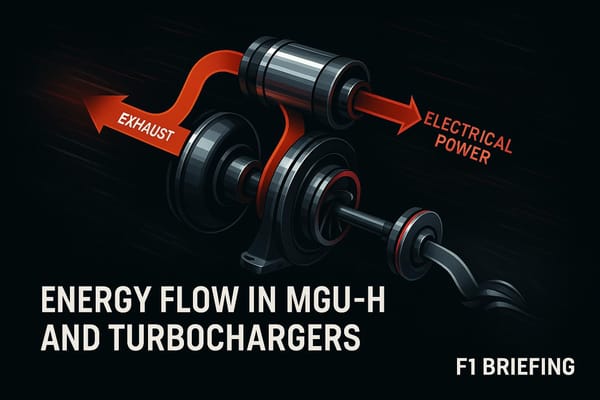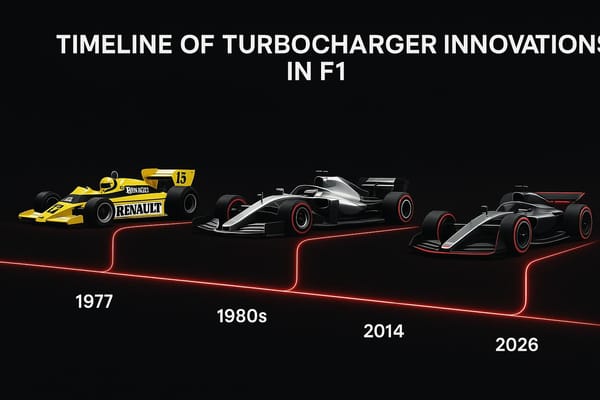Top Tools for Monitoring ERS in F1
Explore the top tools for monitoring Energy Recovery Systems in Formula One, enhancing race strategies through real-time data and predictive analytics.
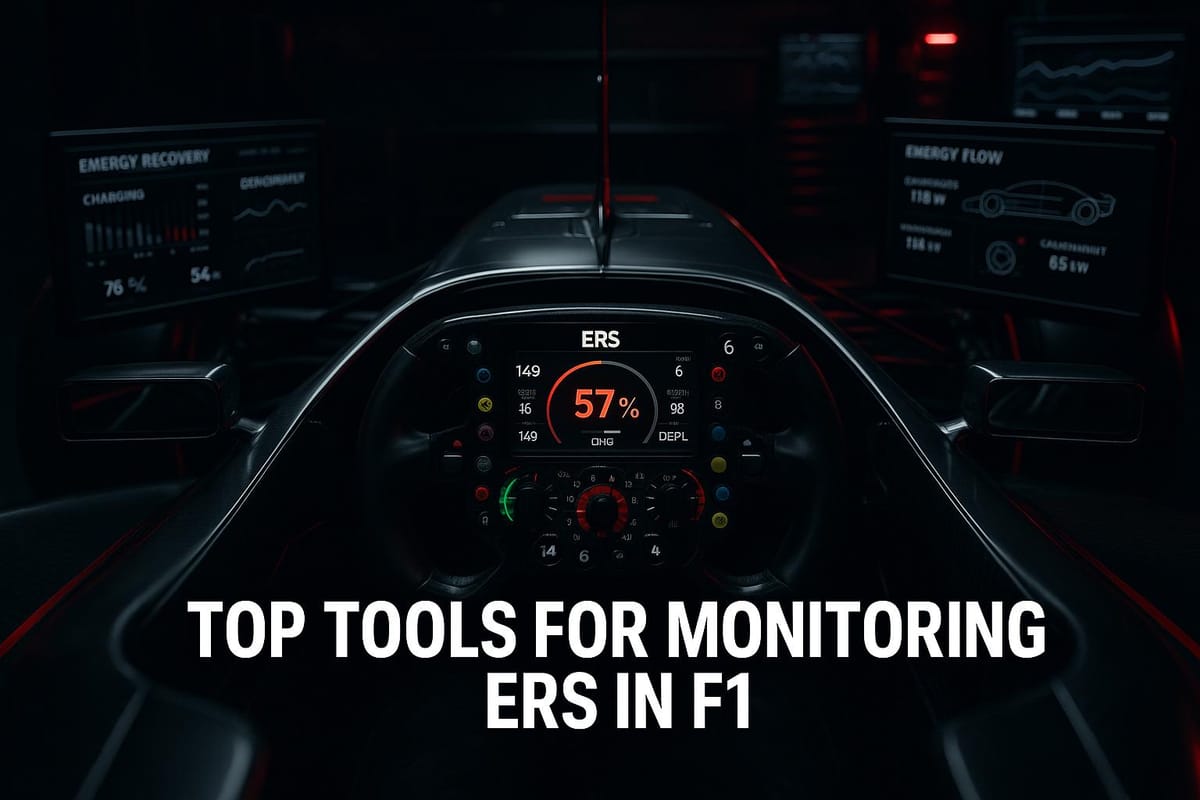
Monitoring the Energy Recovery System (ERS) is critical in Formula One, as it directly impacts a car's performance and race strategy. ERS combines kinetic and heat energy recovery systems, helping teams manage energy deployment for optimal speed and efficiency. To stay competitive, F1 teams rely on advanced tools for real-time data analysis, telemetry, and predictive modeling.
Here are the top tools used by F1 teams for ERS monitoring:
- McLaren ATLAS: A telemetry platform offering real-time data visualization, custom dashboards, and predictive analytics integration.
- Mercedes DataVision: A proprietary system with over 300 sensors, real-time telemetry, and predictive simulation capabilities.
- Red Bull Racing Custom Suite: Tailored for Red Bull's needs, it monitors over 1,000 data channels and provides advanced predictive tools.
- AVL Race Suite: Flexible telemetry software with heat mapping and simulation features for energy management.
- MATLAB/Simulink: Engineering software for ERS modeling, real-time data tracking, and digital twin simulations.
- Bosch Motorsport Data Logger: Durable hardware for high-frequency telemetry and in-car ERS management.
- F1 Briefing: A blog providing post-race analysis and insights into ERS performance trends.
Each tool is designed to help teams optimize ERS usage during races, whether through real-time decision-making, simulation, or post-race analysis. The choice of tool depends on team needs, resources, and performance goals.
How Can F1 Improve ERS Telemetry For Real-time Insights? - Pole Position Experts
1. McLaren ATLAS
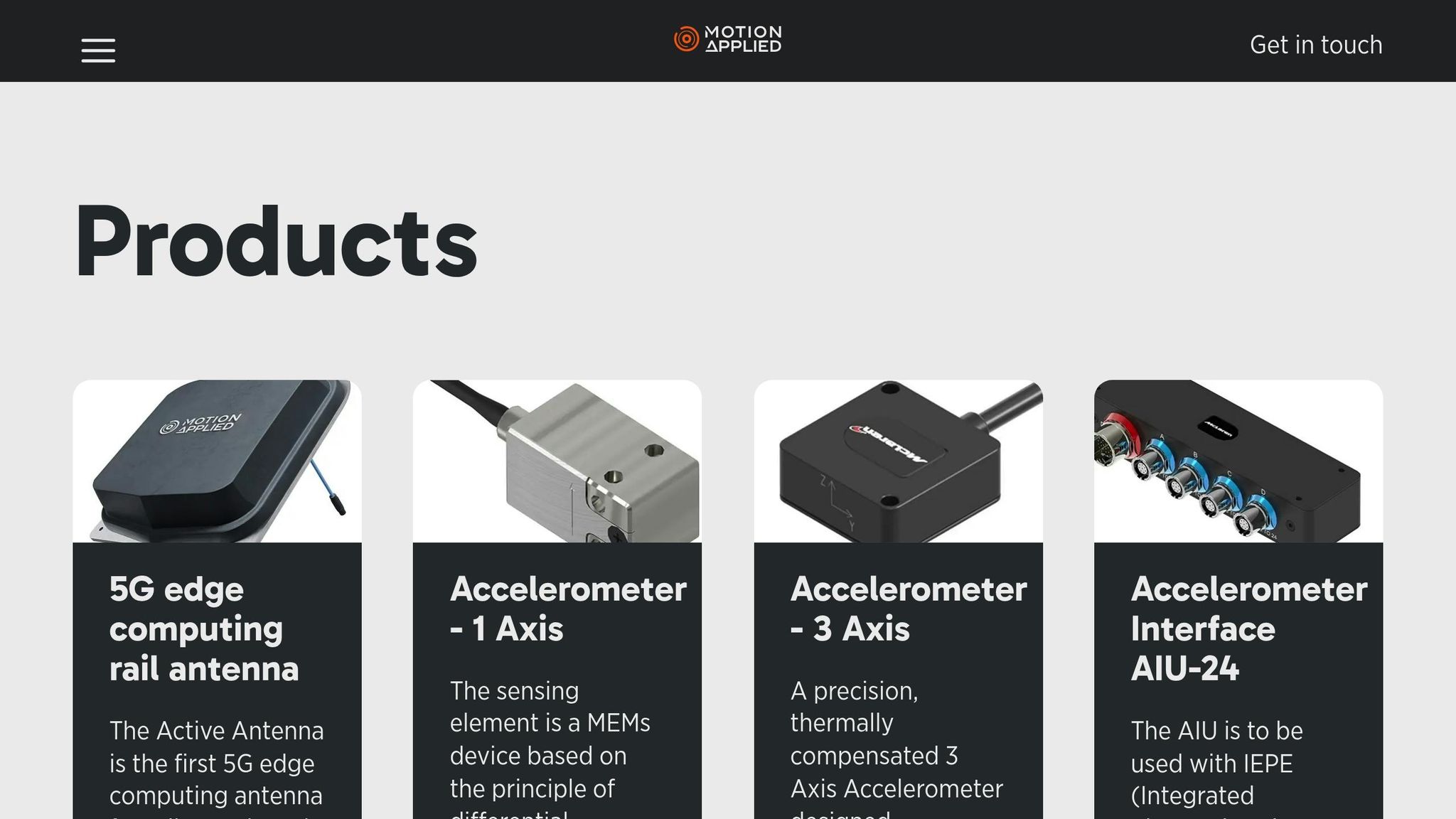
McLaren’s Advanced Telemetry Linked Acquisition System (ATLAS) is a powerful data monitoring platform used in Formula One. Built to capture, display, and transmit live data from F1 cars, it plays a key role in managing and improving ERS performance. Its functionality highlights the importance of real-time data in high-stakes racing.
Real-time Telemetry and Data Acquisition
ATLAS acts as a central hub for processing live data from an extensive network of sensors embedded in F1 cars. These sensors send raw signals to the car’s ECU, which are then transmitted and processed by ATLAS in real time. This system handles the massive influx of data generated during practice sessions, qualifying rounds, and races, allowing engineers to track critical ERS metrics as they happen. During races, ATLAS ensures that all car systems are functioning as intended by delivering essential information to both the trackside crew and drivers, enabling quick, informed decisions.
Custom Dashboards for ERS Monitoring
One of ATLAS's standout features is its ability to provide detailed data visualization tailored for motorsports. Teams can design custom dashboards that focus on ERS-specific metrics, offering in-depth, high-frequency analysis of system performance. These tools help engineers identify trends and optimize performance under different track conditions and race scenarios.
Enhanced Integration with Predictive Tools
McLaren Applied has taken ATLAS to the next level by integrating it with KX's kdb+ software. This integration boosts the system’s power and responsiveness, enabling race teams to perform advanced predictive analytics for ERS.
With these enhancements, teams can adjust ERS strategies in real time when track conditions shift or new opportunities emerge mid-race. Richard Saxby, Director of Motorsport at McLaren Applied, emphasized the impact of this collaboration:
"The integration of KX's kdb+ software with our already industry-leading ATLAS platform is fantastic news for both McLaren Applied and our customers. This partnership demonstrates our continued determination to deliver ever greater power, speed and agility to race teams on the pit wall, enabling them to do the same on track."
This level of adaptability proves invaluable during high-pressure moments, where every decision can influence the outcome of a race.
2. Mercedes DataVision
Mercedes DataVision is the Mercedes-AMG PETRONAS Formula One Team's in-house telemetry and data analysis platform. This cutting-edge system plays a crucial role in monitoring and fine-tuning every aspect of car performance, with a strong focus on managing the Energy Recovery System (ERS). Unlike off-the-shelf solutions, DataVision is a custom-built tool that gives Mercedes a distinct competitive edge. Its seamless blend of simulation capabilities and predictive analytics sets it apart in the world of ERS management tools, offering a highly specialized approach tailored to the team's needs.
Real-time Telemetry and Data Acquisition Capabilities
DataVision processes an immense amount of information, thanks to over 300 sensors installed throughout each Formula One car. Over the course of a race weekend, the system handles more than 1 terabyte of data, which breaks down to about 30 MB per lap.
This data includes crucial ERS metrics such as battery charge levels, energy flow through the MGU-K and MGU-H, thermal performance, and energy deployment efficiency. Engineers can monitor charge and discharge rates in real time, enabling them to adapt strategies instantly if track conditions shift or unexpected events occur during a race.
The platform's high-speed radio links ensure that adjustments can be made in less than a second, giving engineers both at the track and at the Mercedes headquarters in Brackley, UK, the ability to collaborate on ERS strategies in real time. This dual-location setup allows factory experts to contribute their insights directly to race-day decisions, providing an extra layer of support for the trackside team.
Visualization and Dashboard Customization for ERS Monitoring
DataVision's dashboards are designed for flexibility, featuring custom alerts and color-coded warnings tailored specifically for ERS performance. Team members can personalize their dashboards to focus on the metrics most relevant to their roles. For instance, a power unit specialist might prioritize thermal data, while a race strategist might zero in on deployment timing and battery conservation details.
Integration with Simulation and Predictive Analytics Tools
What sets DataVision apart is its integration with sophisticated simulation platforms and predictive analytics tools. These capabilities allow engineers to predict battery depletion, identify optimal energy deployment windows, and anticipate thermal challenges as the race unfolds.
The system’s predictive models go a step further by offering strategic recommendations during the race. For example, it can suggest when to conserve ERS energy or when to deploy it aggressively, factoring in changing race conditions and competitor behavior. This level of insight is especially valuable in high-stakes scenarios where energy management can make or break a race outcome.
Driver Feedback and In-car ERS Management Features
DataVision doesn’t just serve the engineers - it also provides real-time, actionable data directly to the car's ECU and the driver's steering wheel display. Drivers receive updates on battery levels, deployment modes, and suggested energy strategies, all tailored to their specific race situations.
This constant feedback helps drivers make informed decisions about when to use ERS for overtakes or defensive moves. It also offers guidance on adjusting driving styles to maximize energy recovery during braking or coasting, ensuring the car maintains an optimal energy balance throughout the race stint.
3. Red Bull Racing's Custom Telemetry Suite

Red Bull Racing has developed a telemetry system that sets itself apart in managing Energy Recovery Systems (ERS), building on the advanced tools utilized by McLaren and Mercedes. This custom suite is designed to optimize ERS performance through real-time monitoring and strategic decision-making. Unlike generic solutions, Red Bull's tailored approach aligns seamlessly with their race strategy, enabling the team to process massive ERS data streams and deliver actionable insights to engineers and drivers during critical race moments. This system plays a key role in ensuring split-second decisions that can make or break a race.
Real-time Telemetry and Data Acquisition Capabilities
Red Bull's telemetry suite monitors over 1,000 data channels, including dedicated streams for key ERS components like the MGU-K, MGU-H, and the energy store. Using high-speed data links, the system transmits thousands of data points per second from the car to the pit wall. This ensures engineers have immediate access to crucial metrics such as energy harvesting rates, deployment patterns, battery charge levels, and thermal conditions. The high-frequency data acquisition allows engineers to visualize energy flow in real time, enabling precise, on-the-spot decisions to enhance ERS performance during each lap.
Visualization and Dashboard Customization for ERS Monitoring
The system includes customizable dashboards that make monitoring ERS data straightforward and efficient. These dashboards use intuitive visual elements like color-coded bars, trend graphs, and alerts, making it easier to interpret complex data quickly. Predictive overlays add another layer of insight, helping engineers anticipate future ERS behavior based on current trends. The flexibility of the interface allows team members to tailor their dashboards to suit their specific roles, ensuring fast and accurate assessments for strategic adjustments.
Integration with Simulation and Predictive Analytics Tools
Red Bull’s telemetry suite also incorporates simulation and predictive analytics tools, combining live and historical data to model ERS strategies. Engineers can run real-time scenarios, such as determining the best deployment timing for overtaking or the most efficient energy-saving tactics for defending position. These predictive tools allow the team to forecast battery depletion and identify optimal deployment windows, adapting to changing race conditions and competitor strategies. This capability not only enhances energy management but also ensures timely feedback to drivers during the race.
Driver Feedback and In-car ERS Management Features
Drivers benefit from real-time feedback delivered through their steering wheel display and audio cues, keeping them informed about ERS modes, battery levels, and deployment settings. They can make manual adjustments to ERS modes, such as switching to "Overtake" or "Harvest", based on this input. The system ensures these adjustments stay within regulatory limits while maximizing performance opportunities. This immediate feedback loop allows Red Bull to guide drivers on when to conserve or deploy energy during pivotal race moments, giving them an edge in managing ERS on the track.
4. AVL Race Suite
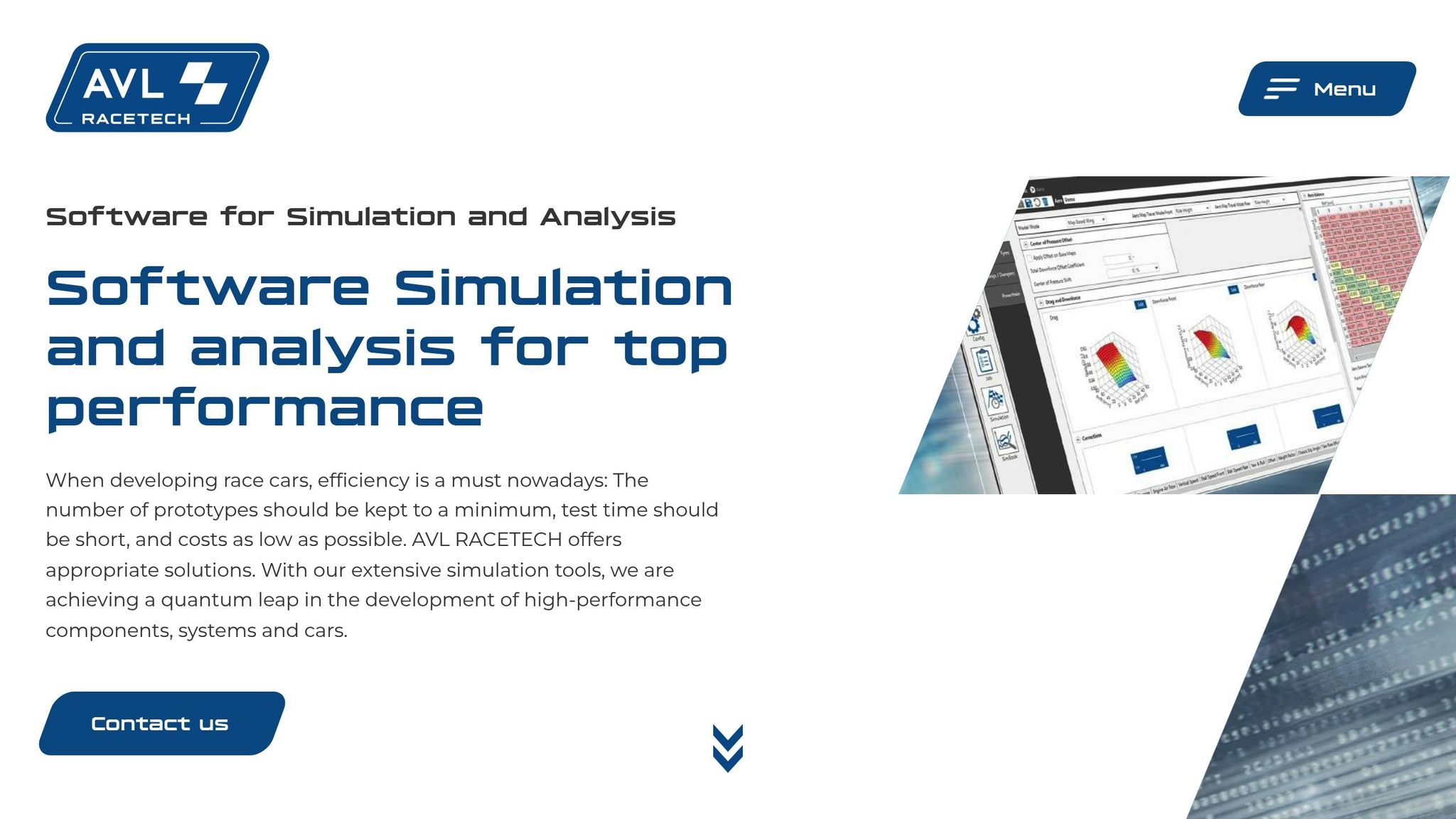
The AVL Race Suite is a flexible ERS monitoring platform built to support the varied strategies of F1 teams. It works seamlessly alongside other advanced systems to manage ERS in real time, bridging the gap between technical analysis and driver feedback.
Real-time Telemetry and Data Processing
Unlike many other platforms, AVL Race Suite processes ERS data using high-speed modules paired with a layered filtering system. This setup prioritizes essential alerts while keeping track of secondary parameters. Engineers benefit from diagnostic tools like thermal mapping and vibration analysis, which help identify potential ERS issues early, enhancing the overall management process.
Customizable Dashboards and Visual Tools
The platform features multi-view displays with specialized widgets designed to showcase energy flow between key ERS components. One standout feature is the heat map functionality, which provides a visual representation of battery temperature distribution and energy density across different sections of the track. These insights go beyond what most monitoring systems typically offer.
Integration with Simulation and Predictive Tools
AVL Race Suite also combines track and weather data with historical performance trends to simulate and refine ERS deployment strategies. This allows teams to test and validate energy management plans ahead of time, while also identifying patterns that can drive ongoing improvements.
Driver-focused Feedback and In-car Tools
What sets AVL Race Suite apart is its driver-centric feedback system, featuring customizable displays that simplify complex ERS data into clear, actionable indicators. These include energy level gauges and deployment alerts, tailored to match each driver's preferences. This personalized approach ensures drivers get the information they need during critical moments on the track.
5. MATLAB/Simulink
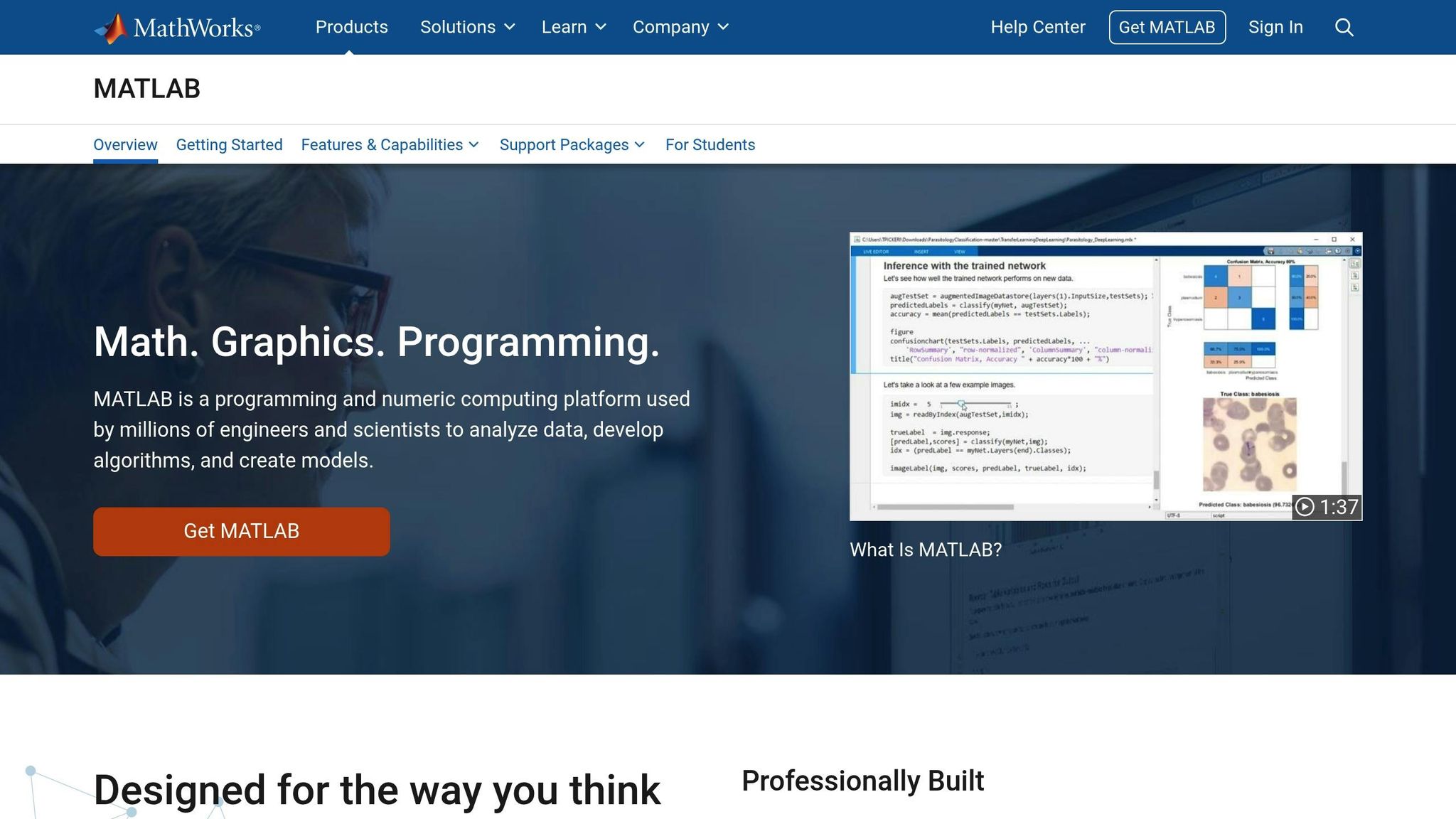
MATLAB/Simulink stands out as a versatile, engineering-focused tool for managing ERS systems. Beyond traditional telemetry software, it empowers teams to create tailored solutions that fit their specific needs. With a standard MATLAB license starting at $2,350 USD for a single user, it’s a go-to platform for advanced ERS modeling and real-time data analysis.
Real-time Telemetry and Data Acquisition Capabilities
MATLAB/Simulink connects directly to F1 car sensors and ECUs, forming a direct link between the car’s ERS components and the engineering team. The platform processes hundreds of sensor data points every second, tracking critical metrics like battery state-of-charge, MGU-K and MGU-H output levels, and energy deployment rates during live sessions.
This real-time feedback allows teams to pinpoint performance issues and identify areas for improvement as they happen. For instance, the platform can analyze how thermal conditions impact energy deployment efficiency or how different energy recovery strategies influence overall availability during a stint. These insights are crucial for optimizing performance on the fly, supported by advanced visualization and simulation features.
Visualization and Dashboard Customization for ERS Monitoring
Engineers can design custom dashboards to monitor key ERS metrics. Real-time plots, gauges, and alert systems can be configured to flag critical thresholds or detect anomalies in ERS performance. This adaptability ensures that essential data is easily accessible, whether in the control room or on pit wall displays. Such tools enable teams to make quick, informed decisions about energy deployment during pivotal race moments.
Integration with Simulation and Predictive Analytics Tools
MATLAB/Simulink goes beyond live data by offering robust simulation tools that refine ERS strategies. Engineers can test deployment plans and predict battery performance under various conditions. By modeling ERS behavior across different race scenarios, teams can forecast battery depletion patterns and optimize energy usage using digital twins - virtual replicas of their ERS systems.
During race weekends, these simulations play a key role. Engineers can evaluate setup changes or adapt to weather fluctuations by running virtual scenarios. Digital twins created in Simulink allow teams to test updates and strategies in a safe, controlled environment before applying them to the car, minimizing risks and maximizing performance potential.
6. Bosch Motorsport Data Logger
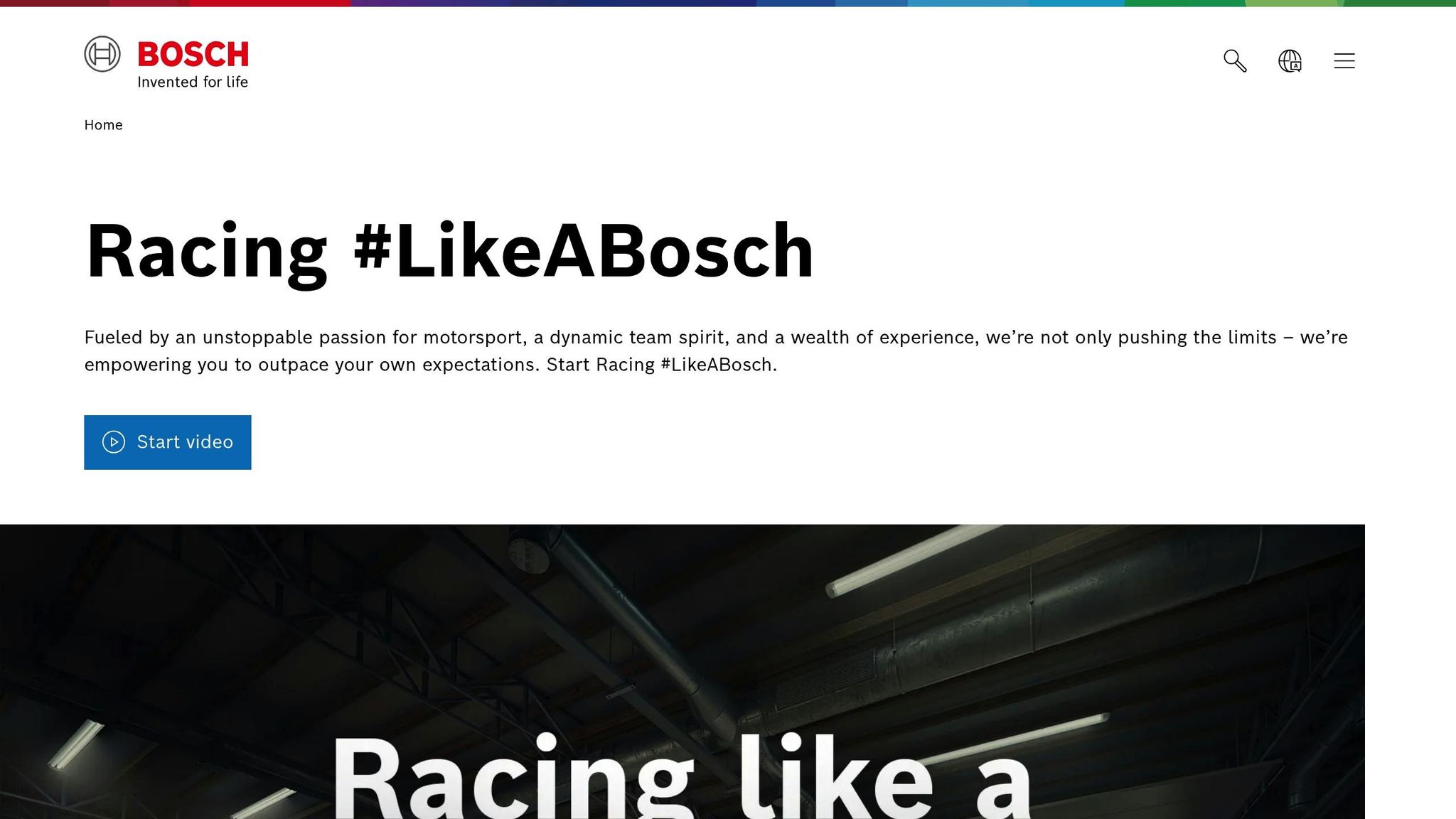
Bosch Motorsport has developed a data logger specifically designed to handle the tough demands of racing, including Formula One. This system is built to endure extreme conditions while gathering crucial metrics from the car's Energy Recovery System (ERS) control units.
Real-time Telemetry and Data Collection
The logger records high-frequency telemetry from essential ERS sensors, ensuring critical deployment events are captured with precision. By using redundant channels, it guarantees uninterrupted telemetry, even in challenging scenarios. Additionally, it stores complete session data, which teams can analyze later to refine strategies and make informed decisions. This dependable data collection forms the backbone of efficient in-car monitoring.
In-car ERS Management Tools
Beyond its data-gathering capabilities, Bosch's system enhances the driver's ability to manage ERS effectively. It integrates with in-car displays to provide real-time status updates, simplifying complex data into easy-to-read visuals. Drivers can use this information to optimize energy usage during races. The system also allows drivers to select specific ERS modes, automatically adjusting monitoring parameters to align with their chosen strategies.
7. F1 Briefing (Blog for ERS Analysis)

While tools like ATLAS and DataVision excel at capturing real-time data, F1 Briefing adds a layer of strategic depth. It takes raw ERS (Energy Recovery System) data and transforms it into detailed analyses, offering teams, engineers, and fans insights into how this data impacts performance on and off the track.
Breaking Down ERS Performance Trends
F1 Briefing dives into the complexities of ERS telemetry, uncovering how it influences team strategies and race outcomes. By interpreting this data, the platform provides commentary that goes beyond numbers, helping teams refine the insights generated by tools like ATLAS. Instead of just reporting data, it highlights how ERS performance plays a pivotal role in competitive racing.
Connecting Data to Strategy
This blog doesn’t just stop at analyzing numbers; it explains how ERS data informs race-day strategies. From evolving regulations to advancements in technology, F1 Briefing sheds light on how these factors shape the use of ERS. By providing this strategic context, it bridges the gap between raw telemetry and actionable decisions, complementing the real-time tools discussed earlier.
Founded by James Smith, F1 Briefing offers a free plan with basic updates and occasional articles. For those seeking more, a premium plan (pricing yet to be announced) grants access to in-depth technical analyses. This approach not only enhances our understanding of ERS but also provides a foundation for comparing tools like ATLAS and DataVision.
Tool Comparison Table
Selecting the right ERS tools is all about matching them to your team's performance needs, ensuring they integrate smoothly with your current systems, and confirming they can handle growing data volumes. Below is a quick comparison of some of the most talked-about solutions in the F1 world:
| Tool | Primary Role | Key Points to Consider |
|---|---|---|
| McLaren ATLAS | Real-time ERS telemetry monitoring | High-end solution crafted for top-tier performance demands |
| Mercedes DataVision | ERS data management and analysis | Proprietary system with advanced, cutting-edge features |
| Red Bull Racing Custom Suite | Custom ERS performance monitoring | Tailored specifically for team needs; highly specialized but custom-built |
| AVL Race Suite | Motorsport data analysis for ERS | Delivers professional analytics, though setup may require expert knowledge |
| MATLAB/Simulink | ERS simulation and modeling | Powerful simulation tools but comes with a steep learning curve for technical users |
| F1 Briefing | Post-race strategic ERS analysis | Focused on detailed insights and strategy rather than live monitoring during races |
This table outlines the main features of each tool. When deciding, think about whether you need real-time data processing or post-race analysis, how well the tool will integrate with your existing systems, and whether it can handle the increasing data loads that come with higher performance demands.
Ultimately, the best tool will depend on your team's unique needs, available resources, and long-term goals. Each option offers distinct advantages, so weigh them carefully to find the right fit.
Conclusion
Modern ERS monitoring systems are reshaping race strategies in Formula One, offering teams an edge that often determines who stands on the podium. These tools have revolutionized energy management by enabling real-time decisions, with engineers analyzing thousands of data points every second to fine-tune energy deployment strategies.
What makes these systems so impactful is their ability to integrate seamlessly with other telemetry platforms. By connecting ERS performance data with tire wear, fuel usage, and aerodynamic factors, teams gain a broader understanding of how to optimize their cars during critical race moments. This interconnected approach not only sharpens strategic insights but also provides the flexibility needed to adapt to ever-changing race conditions.
Looking to the future, artificial intelligence and machine learning are set to play an even bigger role in ERS management. Predictive analytics could soon anticipate the best energy deployment strategies based on factors like track conditions, weather, and the behavior of competitors. Some AI-driven systems are already capable of adjusting ERS strategies mid-race, signaling a shift toward more automated decision-making.
Interestingly, these advancements are no longer exclusive to top-tier teams. Smaller teams are now gaining access to sophisticated ERS monitoring tools, leveling the playing field and driving innovation across the grid. This democratization of technology is forcing all teams to continually refine their strategies to remain competitive.
As Formula One embraces sustainable technologies and explores expanded hybrid systems, the importance of advanced ERS monitoring will only grow. Teams that excel at integrating diverse data streams and leveraging predictive tools are likely to dominate the increasingly complex technical landscape of the sport. These tools embody the relentless drive for progress and precision that defines Formula One.
FAQs
What factors do F1 teams consider when choosing the best ERS monitoring tools?
F1 teams put a lot of thought into selecting ERS monitoring tools, focusing on their ability to process real-time telemetry data and deliver insights that can make a difference on the track. These tools play a critical role in improving energy recovery, power deployment, and overall car performance during races.
When evaluating these tools, teams look for features that aid in strategic decision-making, especially by refining key driver controls like steering, braking, and throttle inputs. Many rely on advanced algorithms to precisely manage energy recovery and deployment, giving them an edge in adapting to ever-changing race conditions.
How does predictive analytics improve ERS strategies during a Formula 1 race?
Predictive analytics plays a key role in refining ERS strategies by crunching massive data sets - like historical performance records, live telemetry, and track conditions - to make quick, accurate decisions during a race. This allows teams to fine-tune energy usage, shave valuable seconds off lap times, and adapt strategies for overtaking or holding off competitors.
Beyond that, it helps teams anticipate component failures, pinpoint the ideal moments for pit stops, and assess the chances of successful overtakes. With these data-driven insights, teams can push performance to the limit while minimizing risks, keeping them competitive on the track.
How do Formula One teams use real-time ERS telemetry during a race?
Formula One teams depend heavily on real-time telemetry from the ERS (Energy Recovery System) to keep track of energy recovery, battery charge, and power deployment during a race. This constant stream of data helps engineers make rapid adjustments, like tweaking energy usage to gain an edge during overtakes or to hold off competitors.
Since telemetry is processed in just milliseconds, teams can adapt their strategies almost instantly, squeezing out every bit of performance and reliability. These lightning-fast decisions often make the difference between victory and defeat, highlighting just how crucial advanced data analysis is in the world of F1.


